Playing in Pain

Playing in Pain
Alex Ovechkin

With news that Alex Ovechkin played Games 6 and 7 of a first-round playoff series against the New York Rangers with a fracture in his left foot, SI.com takes a look at other athletes who played through pain.
Dirk Nowitzki
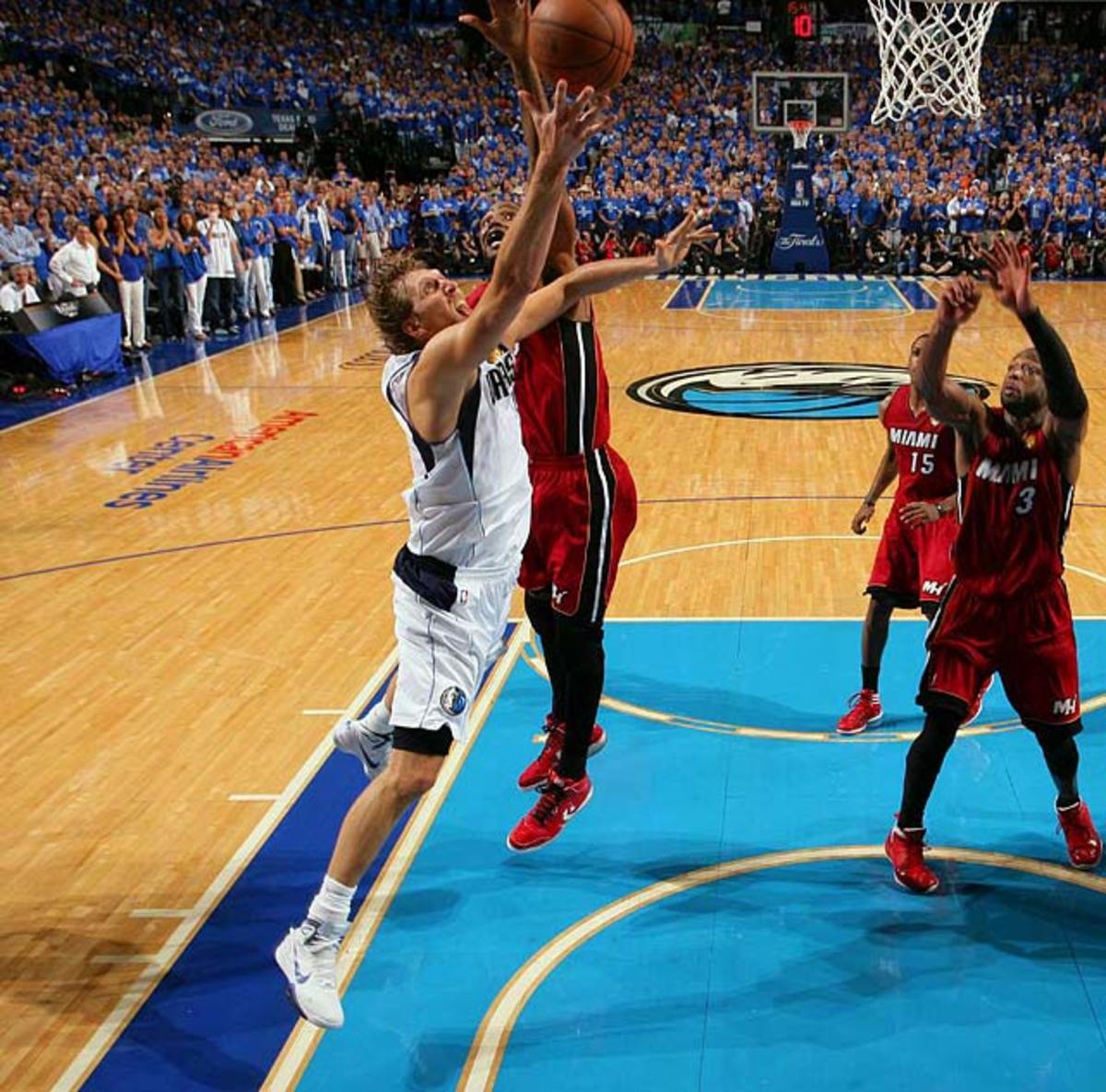
Dirk Nowitzki's gutsy performance during the Mavericks' Game 4 victory over the Heat helped propel Dallas to its only NBA Championship. Nowitzki, already dealing with a torn tendon in one of his fingers, battled through a 101-degree fever on the way to scoring 21 points, including a crucial fourth-quarter layup during the Mavs 86-83 win. That triumph tied the best-of-seven series at 2-2 and Dallas won the next two games to ruin LeBron James' first season in Miami.
Joe Thornton

Although his team may have fallen short against the Canucks in 2011's Western Conference finals, you can't blame Sharks captain Joe Thornton for a lack of effort. The 14-year NHL veteran played in Game 5 despite the fact that he had suffered a separated shoulder two nights before. His determination didn't quite translate into results, though, as Thornton went minus-2 in what became San Jose's final game of the season.
Rajon Rondo

When starting Celtics point guard Rajon Rondo dislocated his elbow during Game 3 of the Eastern Conference semifinals against the Heat, the Boston crowd had a good reason to be worried. But just 7:01 of game time later, Rondo was back on the court for the fourth quarter, his left arm hanging from a sling. Rondo finished the game one-armed, with four of his six points coming after the injury.
Didier Drogba

Didier Drogba was feared lost for the 2010 World Cup after breaking his arm on a high challenge by Japanese defender Marcus Tulio Tanaka in the final friendly before group play began. The Ivory Coast striker had surgery to repair the arm, was outfitted with a soft cast and allowed to play in the first match against Portugal (0-0 draw), coming on as a substitute in the 66th minute.
Duncan Keith

In the second period of Game 4 of the Western Conference Finals, the Chicago Blackhawks' defenseman took a puck to the mouth and spat up seven teeth. The Hawks medical staff stopped the bleeding and removed tooth fragments before Keith returned to complete the four-game sweep of the San Jose Sharks. Keith and the Hawks went on to win the Stanley Cup Finals.
Johan Santana
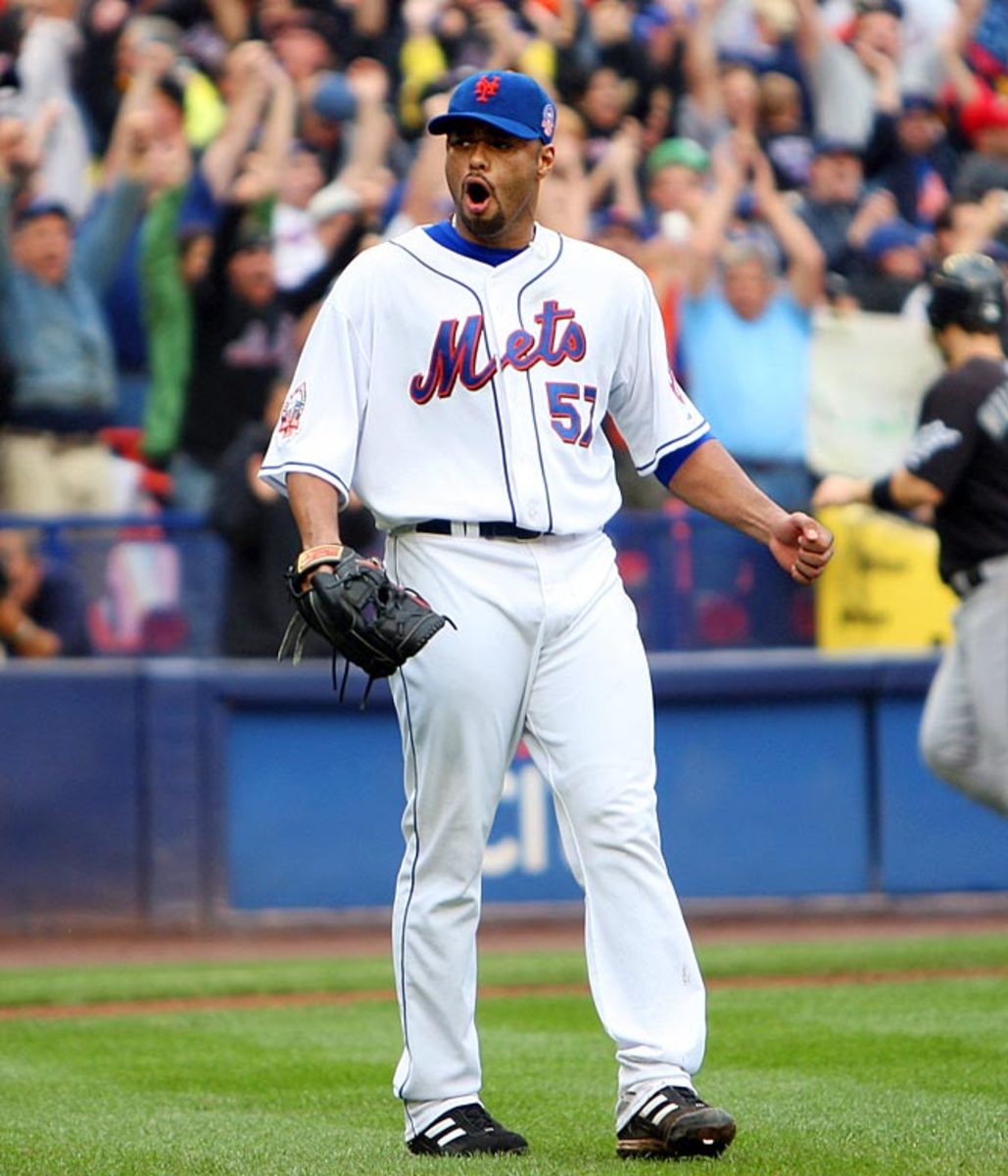
Unbeknownst to the Mets, Johan Santana pitched most of September with a torn meniscus, including a three-hit shutout of the Marlins on the next to the last day of the regular season. This after he had thrown a career-high 125 pitches three days earlier, in yet another victory that kept the Mets' playoff hopes alive. He had his best month in September, going 4-0 with a 1.83 ERA. Here are some others who played in pain.
Tiger Woods

Playing for the first time since arthroscopic knee surgery two months prior, Tiger Woods battled for 91 holes, often times in pain, to win what he ranks as the best of his 14 major championships. Two days later he announced that he would undergo reconstructive knee surgery and miss the rest of the season.
Ryan Malone

Ryan (middle) played through a broken nose in this year's Stanley Cup Finals -- twice. Niklas Kronwell broke Malone's nose with a check in Game 1, but Malone was back in the lineup for Game 2 before teammate Hal Gill hit him in the face with a Game 5 slap shot. Suffering another broken nose and a large gash on his cheek, Malone was back on the ice for the following period.
Plaxico Burress

After aggravating a right ankle sprain in the Giants' Week 2 matchup against the Packers, Burress went out the next week to catch five passes for 86 yards, including a 33-yard game-winning touchdown in the fourth quarter. Burress played the rest of the season on the ankle and even caught the Super Bowl-winning touchdown.
Philip Rivers

After a 21-12 loss to the Patriots in this year's AFC Championship Game, Chargers quarterback Philip Rivers revealed he had undergone arthroscopic surgery on his right ACL just a week before the game. Rivers completed 19 passes for 211 yards in the game, and had major surgery on the ACL three days later.
John Terry

After breaking his cheekbone in a collision with Fulham's Clint Dempsey, the Chelsea captain played in a Champions League match against Valencia just three days after undergoing surgery.
Chris Simms

The Tampa Bay Bucs quarterback was hit repeatedly by the Carolina Panthers defense, but remained on the field. Four hours after the game ended he was diagnosed with a ruptured spleen.
Terrell Owens

Seven weeks after breaking his leg and tearing ligaments, Owens played 62 of 72 offensive snaps in Super Bowl XXXIX against he Patriots, catching nine passes for 122 yards in the losing effort by the Eagles.
Steve McNair

After sharing the MVP award during the 2003 season, McNair suffered a bruised sternum on Sept. 26, 2004 against the Jaguars. The Alcorn State product defiantly chose to play through agonizing pain in five more games for the Titans, even after the team's playoff prospects faded away.
Curt Schilling

Although conspiracy theorists question the extent of Schilling's 2004 ankle injury, the pitcher won Game 6 of the ALCS and Game 2 of the World Series in a sock that appeared soaked in blood from the sutures used to stabilize a torn tendon sheath. Schilling threw a combined 13 innings and gave up just one run in each of the two outings.
Brett Favre

The NFL record holder for consecutive starts by a quarterback, Favre played through a multitude of injuries: from a broken thumb on his throwing hand during the second half of the 2003 season to tendinitis in his left elbow early in the 2000 season.
Donovan McNabb

With the Eagles fighting for a playoff berth, their quarterback limped off the field after getting sacked by a pair of Cardinals on the third play of their Week 11 game. Telling the trainers his ankle was merely sprained, McNabb returned to the game and went 20-of-25 for 255 yards with a career-high 4 TDs. He missed the next six weeks but returned in the playoffs, where the Eagles lost to Tampa Bay in the NFC Championship game.
Byron Leftwich

After a first-quarter hit sent him off the field with a broken shin, it seemed unlikely the Heisman candidate would return. But after a trip to the hospital, Leftwich limped back in the third quarter, and though he would have to be carried down the field by two of his linemen on some plays, the Marshall QB threw 14 passes for 108 yards in a 34-20 loss.
Steve Yzerman

After missing nearly 30 regular-season games with a knee injury, Yzerman led the Red Wings to their 10th Stanley Cup with a team-high 23 points, playing on a knee that required reconstructive surgery in the offseason and knocked him out of the first 66 games of the 2003 season.
Reggie Miller
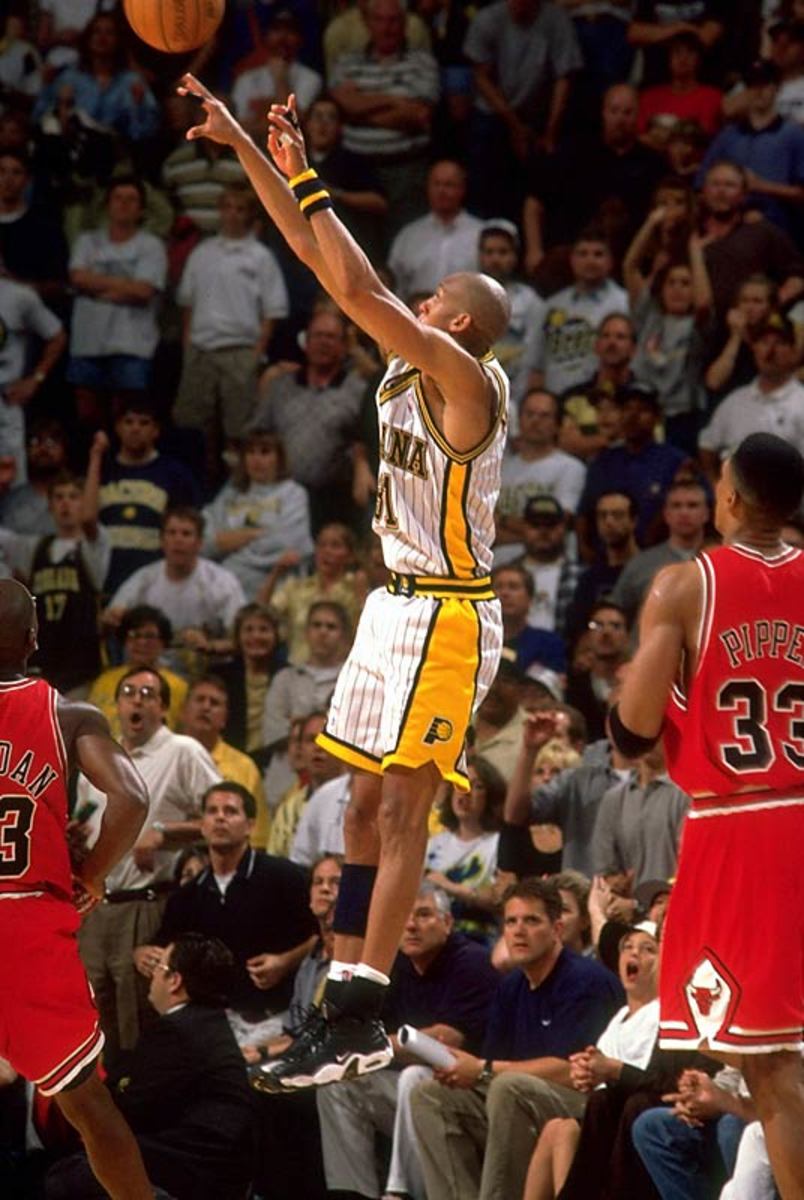
With his Pacers down by one late in Game 4, Miller came off a double-screen to hit a game-winning three-pointer with less than a second left on the clock -- all with a sprained ankle. The shot tied the series, but the Bulls would ultimately advance to the Finals in seven games.
Michael Jordan

With the series against the Utah Jazz tied 2-2, Jordan awoke in the middle of the night before Game 5, shaking, sweating and vomiting with the flu. Though trainers doubted he would play and he needed an IV at halftime, Jordan played 44-of-48 minutes and scored 38 points, 15 in the fourth quarter.
Pete Sampras

After falling behind two sets to one, Sampras, suffering from dehydration and stomach pains, vomited on court and nearly fainted as he came back to beat Alex Corretja in a fifth-set tiebreaker. Sampras would go on to win his fourth U.S. Open title.
Kerri Strug

The U.S. Women's gymnastics team needed Strug to earn a 9.5 or better on her vault to seal the gold medal, but she fell on her first attempt, injuring her ankle. Her second pass, though, provided the defining image of the 1996 Atlanta Olympics: She landed her vault on one leg and earned a 9.712 -- good enough to clinch the gold medal -- before crumbling to the ground in pain.
Emmitt Smith

Halftime X-rays revealed that Smith had separated his shoulder in the second quarter, when Giants safety Greg Jackson tackled the running back from behind. But Smith came back to rush for 59 yards on 13 attempts, leading Dallas to a 16-13 overtime win that clinched the NFC East title, home-field advantage in the playoffs, and, for Smith, a third-consecutive rushing title.
Terry Butcher

Despite a gash in his head that required stitches mid-match, Butcher insisted on returning to a pivotal match against Sweden during qualifying for Italia 90. The cut opened again as he continued to head the ball, leaving his face and uniform in a bloody mess.
Michael Chang

Screaming in pain as he played with a severe case of leg cramps, the 17-year-old Chang gutted out a 4-6, 4-6, 6-3, 6-3, 6-3 win over Ivan Lendl in a 1989 French Open semifinal. He dropped to his knees and cried after the match, and a week later became the youngest male champion in Grand Slam history.
Kirk Gibson

Not expected to play after severely injuring both legs in the NLCS, the NL MVP made good on his one at-bat in the 1988 World Series. With the Dodgers trailing 4-3 in Game 1 with a runner on and two outs, Gibson launched Dennis Eckersley's 3-2 pitch out to right field, winning the game with a bottom-of-the-ninth, walk-off home run at Dodger Stadium.
Isiah Thomas

In an unsuccessful attempt to win Game 6 and the 1988 NBA Finals, Isiah Thomas earned a world of respect for his second-half exploits. Having already scored 14 points in the third quarter, Thomas severely sprained his ankle and had to be helped off the floor. He returned, however, to finish with a NBA Finals record 25 points in a quarter, and scored 43 points on the night.
Kevin McHale

Playing on a broken right foot for the final three months of the season, including 21 playoff games, McHale averaged 21.1 points and 9.2 rebounds in 39 minutes per game. The Celtics lost to the Lakers in the Finals, and McHale would have surgery immediately after the season.
Joe Montana

Montana underwent a two-hour surgery to fix a ruptured disk suffered while throwing a pass in the 1986 season's opening game. Doctors said his career might be over -- Time Magazine noted with confidence that "he is lost to the San Francisco 49ers for this year at least" -- but Montana returned two months later to lead the 49ers into the playoffs. The next season he led the NFL in passing for the fourth time.
Ronnie Lott

The Hall of Fame defender mangled his left pinky in a 1985 game against the Cowboys in a collision with Cowboys running back Tommy Newsome. He briefly came out of the game, but returned and then taped it up for the season ending loss to the Giants. In the offseason doctors said he could either go multiple procedures, including a skin graft, to restore full use of the finger, and possibly miss playing time, or amputate the tip of his pinky and play right away. He chose the latter and made his 3rd Pro Bowl that next season.
Jack Youngblood
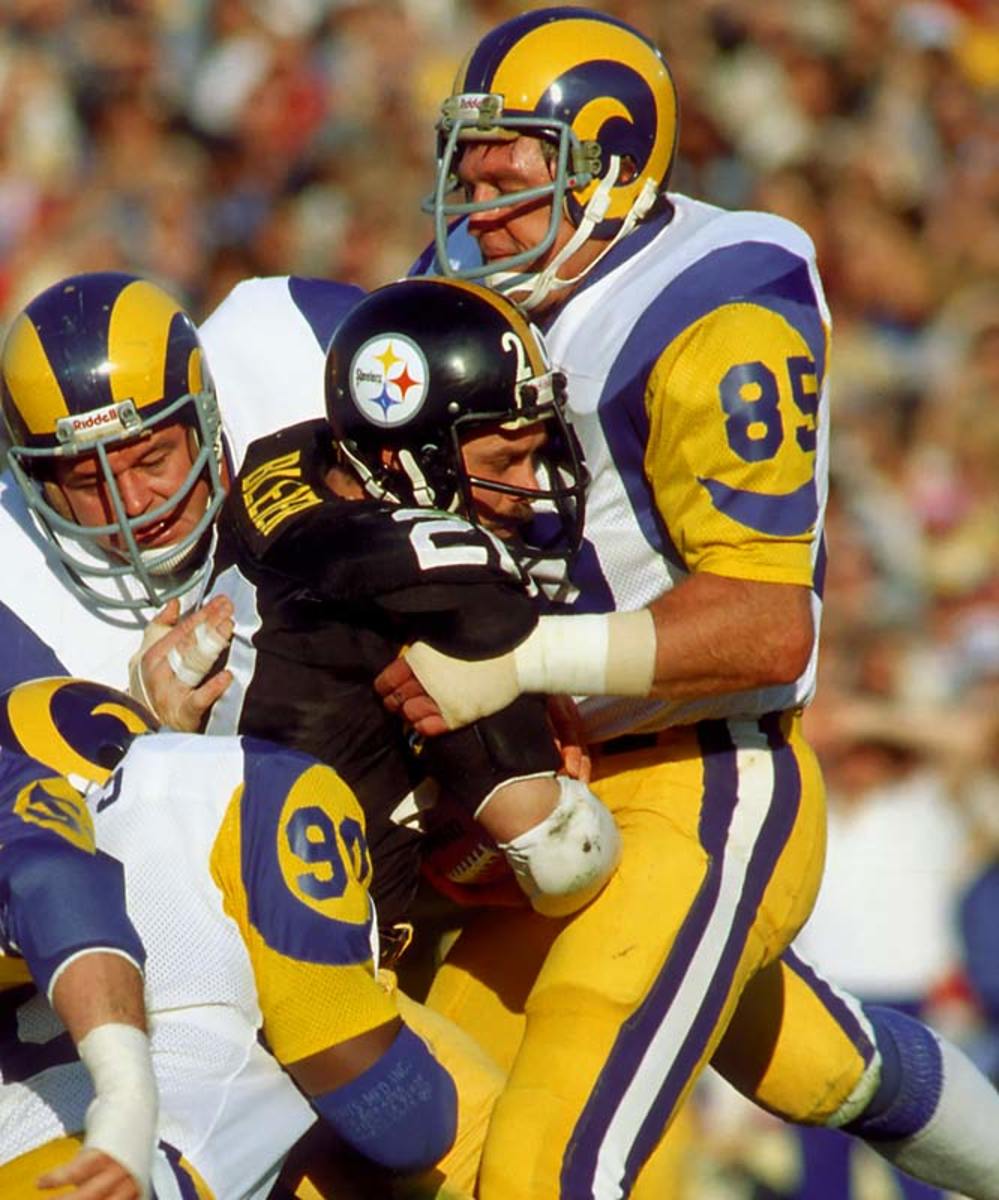
A chop block snapped Youngblood's fibula just above the ankle, but the defensive end returned with a leg brace to help the Rams upset the Cowboys, even sacking Roger Staubach once. He played through the rest of the playoffs, as the Rams lost in the Super Bowl to the Steelers.
Shun Fujimoto
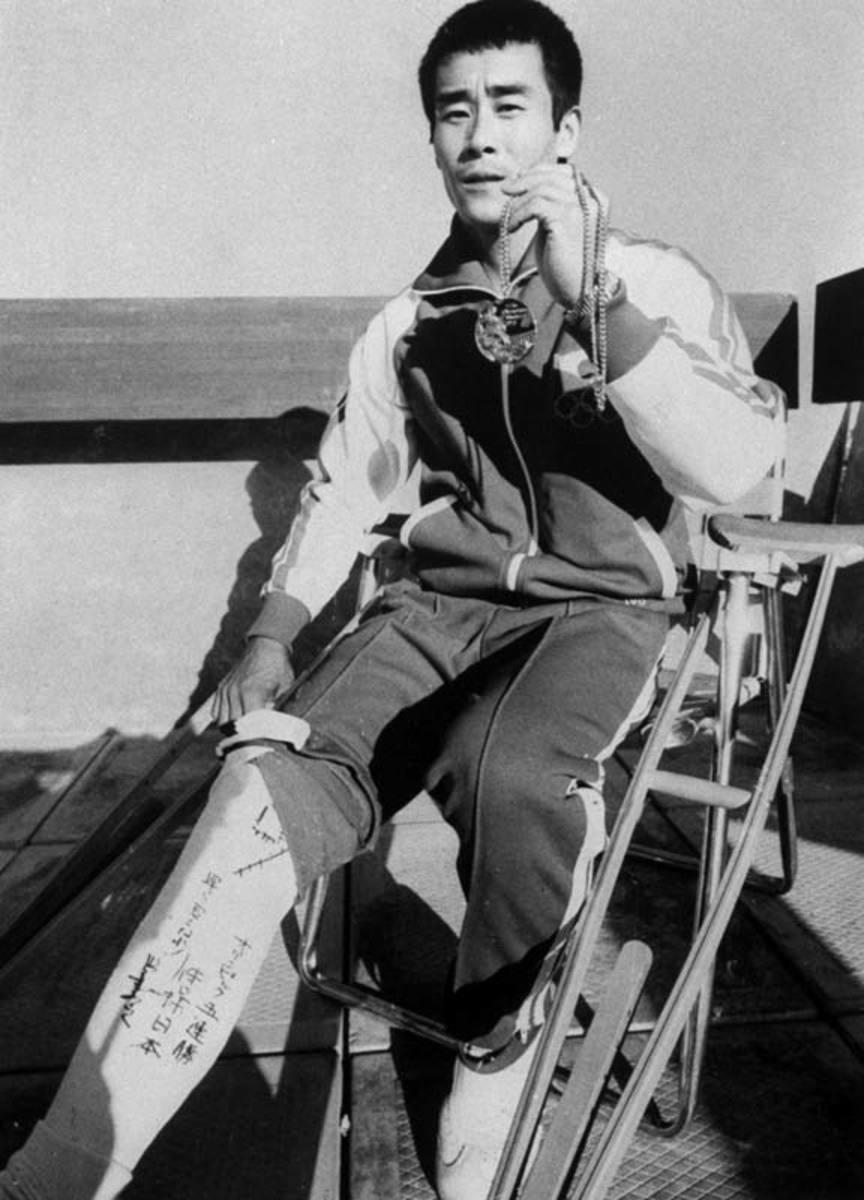
The Japanese gymnast completed the last three rotations of the 1976 men's Olympics team competition with a broken knee cap, collapsing in agony after the pain shot through his leg following his dismount from the rings.
Walt Garrison
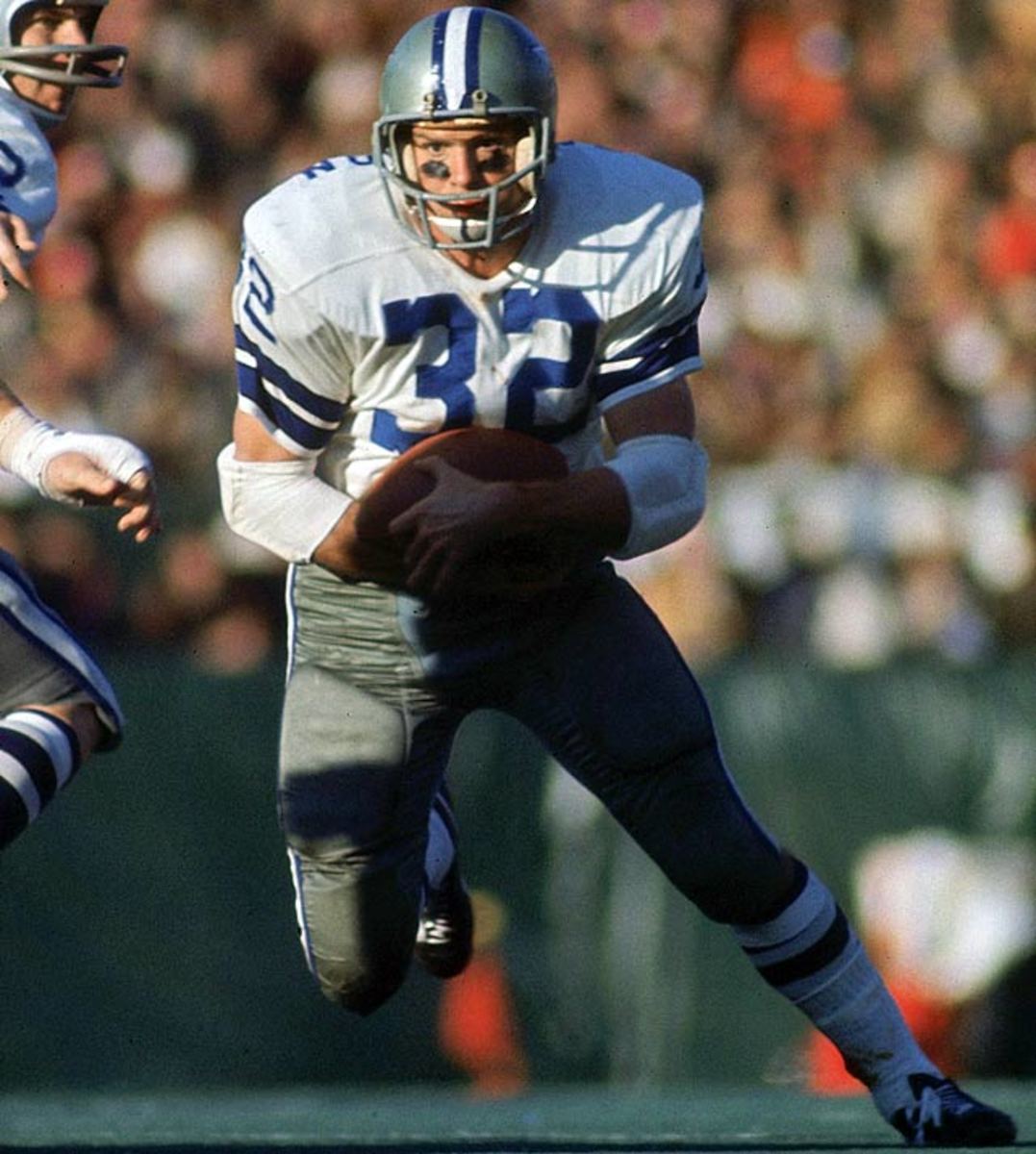
The Cowboys running back broke three ribs in the first quarter of a playoff game, and was carried off the field, but returned to rush for over 100 yards and helped the Cowboys reach Super Bowl V.
Franz Beckenbauer

In a 1970 World Cup semifinal against Italy, Beckenbauer (left) suffered a fractured clavicle and played the remainder of the game with his dislocated arm in a sling.
Willis Reed
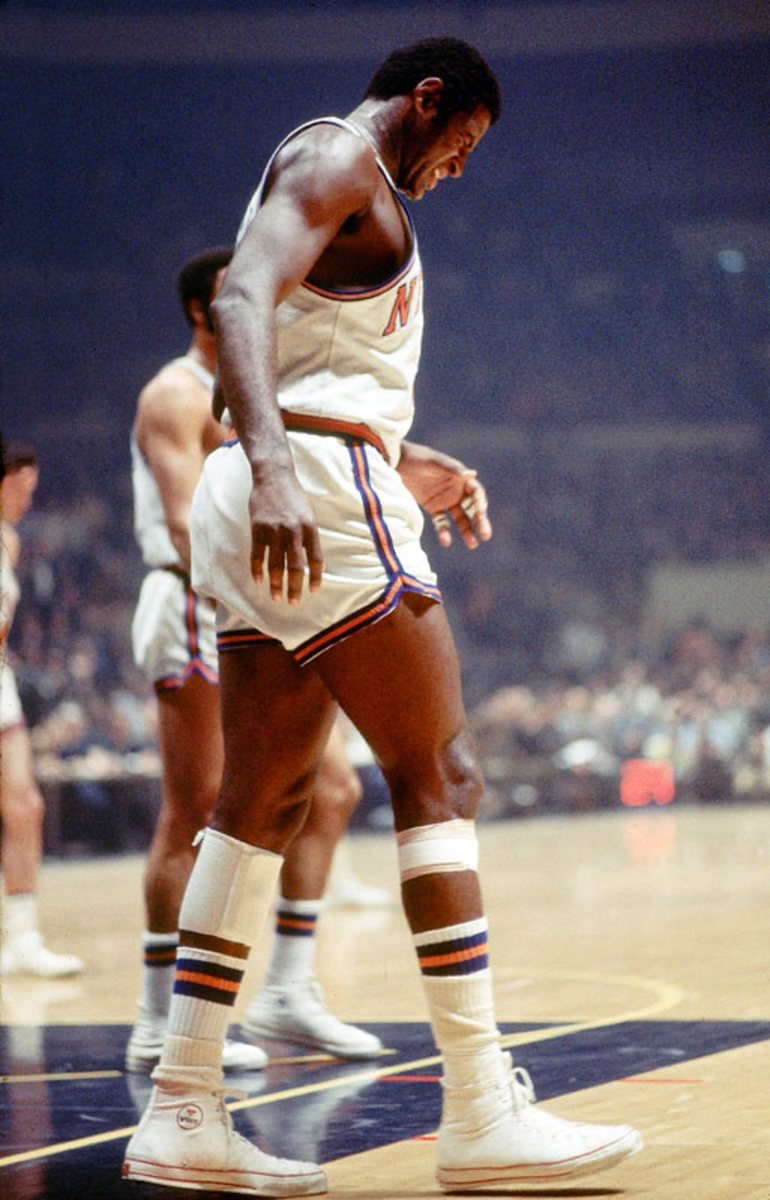
No one knew if Willis Reed would play in Game 7 after suffering a severe torn muscle in his thigh. But Reed was in the starting lineup and scored the first four points -- his only in the game -- and played a crucial 27 minutes of defense on Wilt Chamberlain to help lift the Knicks to their first title.
Sandy Koufax

He pitched 658.2 innings during the 1965 and 1966 seasons, winning back to back Cy young awards with a combined 53-17 record. He did this while dealing with traumatic arthritis in his pitching elbow. Koufax retired after the '66 season after a five-year stretch that included a 111-34 record, three Cy Young awards and four no-hitters (one a perfect game).
Y.A. Tittle

The iconic photo of him kneeling came during a 1964 game against the Pittsburgh Steelers after throwing an interception that was returned for a TD. He suffered a concussion and a cracked sternum on the play but would go on to finish his last NFL season despite the Giants 2-10-2 record.
Bobby Baun

Taken off on a stretcher in the third period, the defenseman returned to the ice early in the first overtime and to net the game-winning goal two minutes into the extra frame. A postgame X-ray revealed a broken bone in Baun's lower right leg, but even that didn't deter the hard-hitting blueliner. He took one shift in Game 7, which the Leafs won 4-0 for their third-consecutive championship.
Bert Trautmann

Manchester City's goalkeeper broke a vertebrae in his neck while making a play with 15 minutes to go in 1956 FA Cup Final. He went on to make two mores saves in his team's 3-1 victory.
Ben Hogan

Before Tiger Woods won this year's U.S. Open on an injured knee, Ben Hogan limped to victory at the 1950 U.S. Open just over a year after a near-fatal car accident left him with a broken collarbone and rib, a double fracture of the pelvis, and a fractured ankle. Like Woods, Hogan forced a playoff on the final hole, which he won the next day. Who would you add to the list? Send suggestions to siwriters@simail.com.
